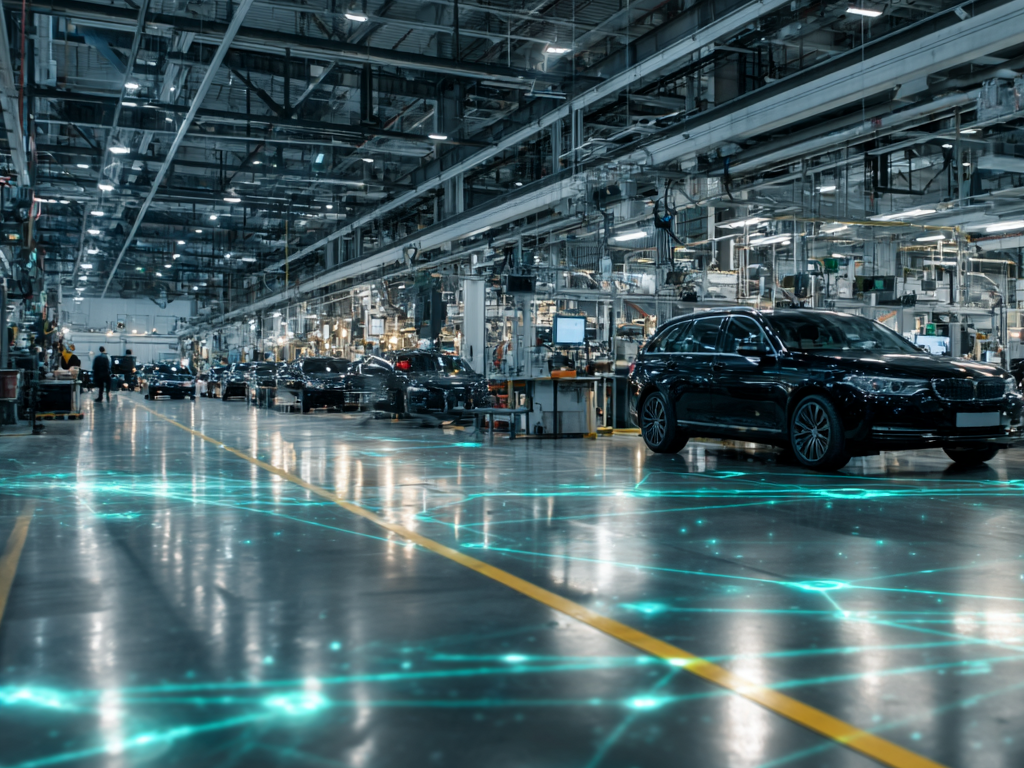
Digitalization and low-cost automation: rapidly increase productivity

The highly automated and fully digitalized factory is the supposed ideal for the future of production. However, the current challenges facing companies are different: In an economic environment in which cost pressure is increasing, sometimes dramatically, and investment budgets are therefore often very limited, a pragmatic strategy for realizing productivity gains is essential. In its projects, ConMoto therefore relies on a smart combination of low-cost automation and full automation for highly repetitive activities - supplemented by modular standard elements that are easy to plan, flexible and scalable. The projects enable our customers to achieve rapid, effective increases in productivity that make use of technological progress without the need for excessive investment.
Prerequisites for efficient production systems
To benefit from new developments, manufacturing companies must have the basics of efficient production management anchored in their production systems. If this is not fully the case, it must be a mandatory part of productivity-enhancing projects in order to achieve real improvement. These basics include
- Understanding value streams in depth and their interrelationships, making
- performance measurable, setting
- traceable standards and implementing
- improvements sustainably.
However, many companies increasingly want to set up highly digitalized factories, even though they lack the fundamentals to be able to roll out digitalization profitably via the store floor and appropriately linked to the top floor. Digitalization is only the enabler here to measure performance with little effort, to interpret it in a targeted manner and to identify deviations from the standard. Careful feasibility studies and profitability analyses are therefore important for both individual production elements and their interlinking in order to be able to implement a precisely tailored low-cost automation solution that unlocks the potential without excessive investment and costs.
As a dimension of factory planning, digitalization and automation are two essential pillars for the competitive factory of today and tomorrow. ConMoto supports its customers throughout the entire planning process and subsequent implementation: from the footprint strategy to profitability studies and the business case through to the design of the layout. Identification of automation and digitalization options are developed in parallel and backed up with corresponding business cases. The focus is on an individual customer solution that can be implemented quickly and generates a high level of benefit.
Project example
Recently ConMoto, part of H&C, worked with a well-known Tier 1 supplier in the premium segment to design, plan and then successfully implement a new, lean and logistics-oriented factory of the future in a European growth market using its proven 7-step approach.
A central point was the creation of flow within the factory. The following steps were implemented in a structured manner
- Analysis of the factory's product range: creation of product/technology matrices
- Identification of the main process flows and sensible interlinking (one-piece flow)
- Standardization of the production elements and systems
- Introduction of (sensible) automation based on careful feasibility studies and economic feasibility studies
Conclusion:
The success and extremely positive feedback from our customers proves this right: the factory of the future is based first and foremost on smart processes and uses a combination of low-cost automation and full automation for highly repetitive activities, has a modular structure and thus combines simple planning and implementation with scalability and flexibility.



